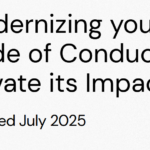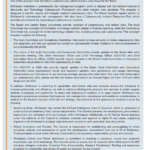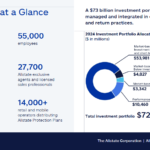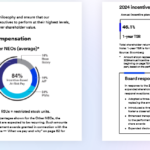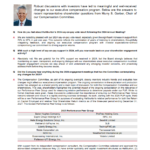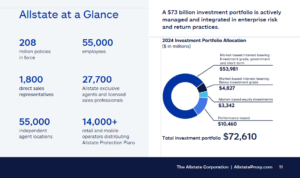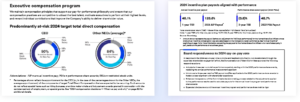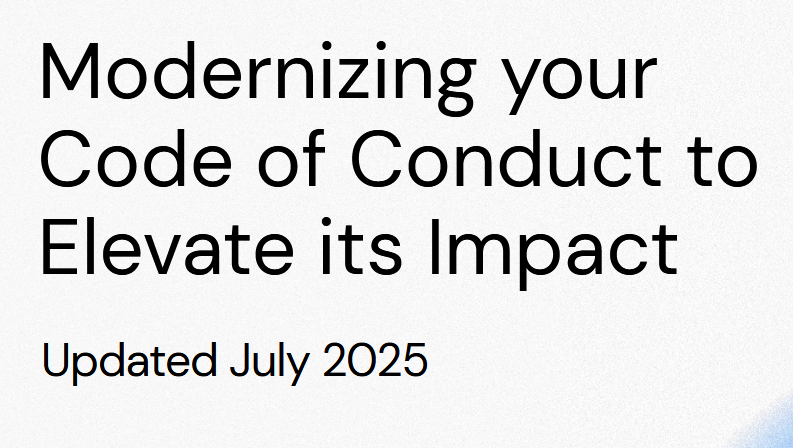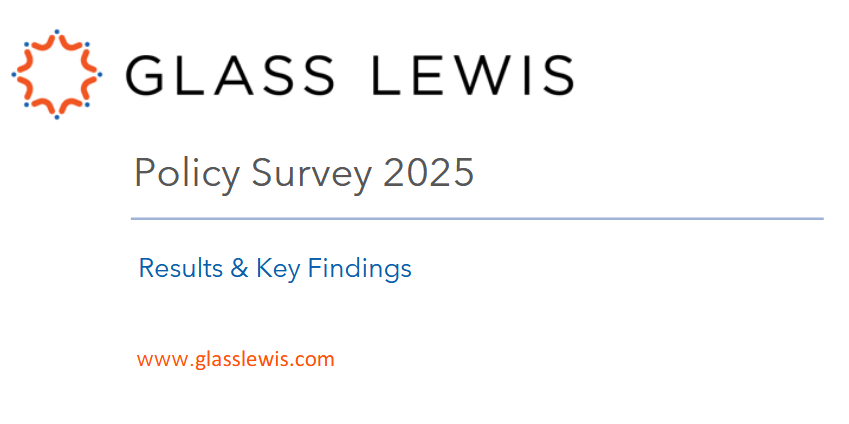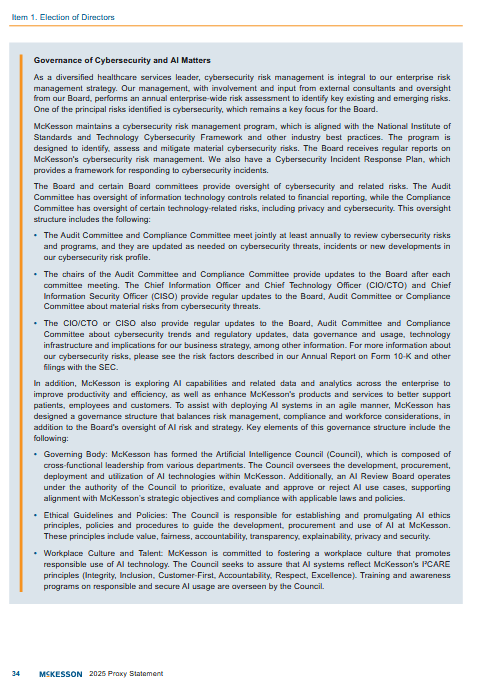Transparency Criteria #63 for the proxy states:
The proxy summary or CD&A executive summary includes a summary of key compensation practices and policies (what we do/don’t do, or list).
As a long-time practitioner, it’s been interesting to see the phenomenal growth of the “What We Do/What We Don’t Do” graphics that have become so common in proxies today. Probably over 90% of companies include this type of graphic in their proxy these days. [Note that in our benchmarking in 2022, only 50 companies included this type of graphic – that level of penetration was 78% this year.]
Some of these graphics are a laundry list of comp items; some are broken up by category. Either format works. Here is one example from BlackRock’s 2023 proxy (page 79):
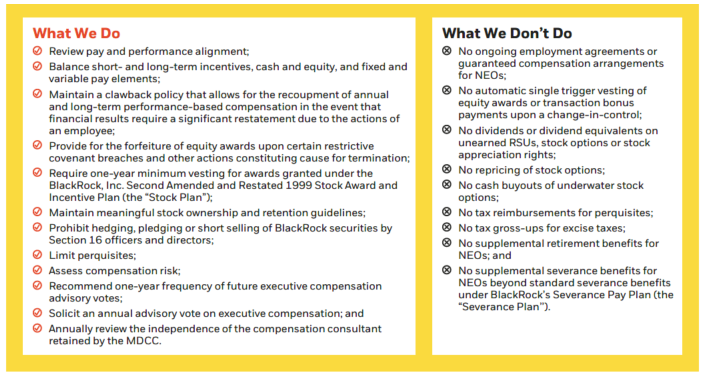
And here is another example from Cisco’s 2022 proxy (page 34):

The growth can be attributed to companies listening to what readers want. It’s about accessibility. Shareholders want disclosure to match their needs – in this case, to mark up their checklist of what their policies and guidelines require. This allows the reader to see what the company has – and what they don’t have.
Interestingly, it’s the omission of certain items in the list that might raise eyebrows and cause the reader to do a deeper dive into why that item is missing. So be mindful of what you don’t have in your list of “What We Do/What We Don’t Do” – and if you think readers are going to wonder why something is not on your list, include disclosure to explain why not.

